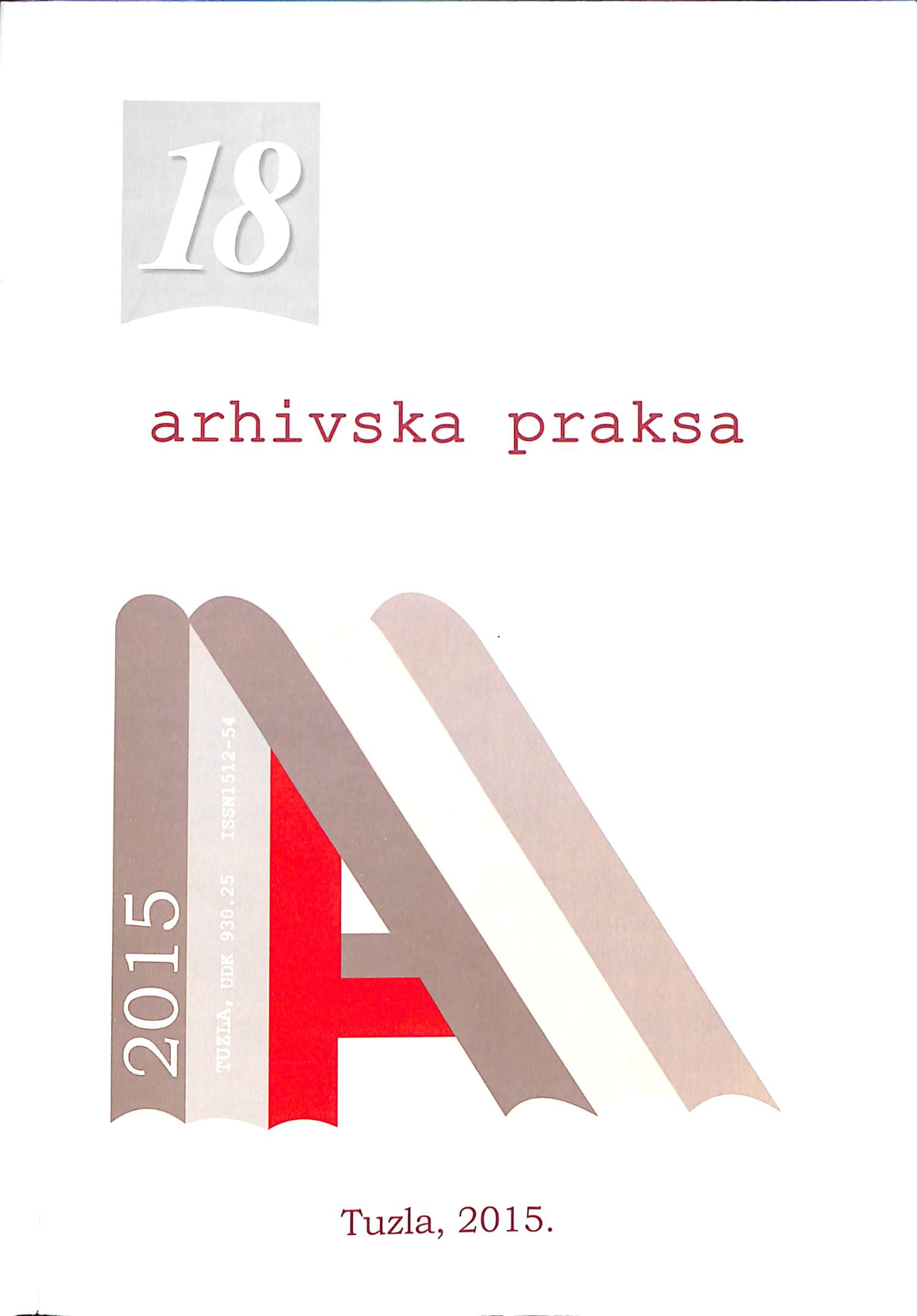Zaštita arhivskog gradiva na primjeru urušenog Historijskog arhiva grada Kelna
Protection of archival material on the example of Historical archives of Cologne
Author(s): Dario MlinarevićSubject(s): Archiving
Published by: Arhiv Tuzlanskog kantona
Keywords: archival material;restoration;damage;filth
Summary/Abstract: The disaster that has befallen the largest city on the Rhine is immeasurable and its consequences to people and the wider community feel for a long time. When we see pictures of scale disaster, we think “no way” that a lot of that could be saved. So that the percentage of 96% of salvaged material is extremely great success. “Found no means saved”, as said the head of the Historical Archive of Cologne Bettina Scmidt-Czaia after the end of the search for the material, because the archives has had varying degrees of damage, and the first task was to identify and determine its origin, and the process will take a few more years. As can be seen from the given examples, a new complex damage occurred in many cases because they appeared previously not repaired the old damage, and require extra time and complicated procedures of restoration. From this disaster has yet emerged something “positive”, so to say. The project was born in Digital historical archive of Cologne, just a few days after the collapse of a building archives. The goal was to digitize the restored originals and microfilms, as well as photographs and copies of which are held by private persons and make them available online on the website archives. So from an “idea emergency”, thanks to various donations and support by the DFG (German Research Community) grew a great new project. The restoration and digitization of salvaged material is the basis of this project. Material that is left after the rescue of the 20-odd asylum archives throughout Germany, there is systematically out of the restoration and digitization center Historical Archive in Cologne-Porz (RDZ). There the material restored in a few steps preparing for digitization. As the most important measure and a first step to re-use material imposes the process of dry cleaning. After a dry cleaning material submitted to archivists, who decide whether to digitize the material and determine the safety limits of availability due to damage. Mainly digitized material that is often used, in order to protect the originals, and the material that can not be identified, in order to over the Internet could offer someone to identify. Meanwhile, the use of barcodes and unidentified material, or material that can not be put under a certain signature, as well as make it easier to be machine-readable. Digital Archive of Historical Archive of Cologne will continue to be the most important source for research and access to the memory of Cologne.
Journal: Arhivska praksa
- Issue Year: 2015
- Issue No: 18
- Page Range: 120-131
- Page Count: 12
- Language: Bosnian, Croatian, Serbian

